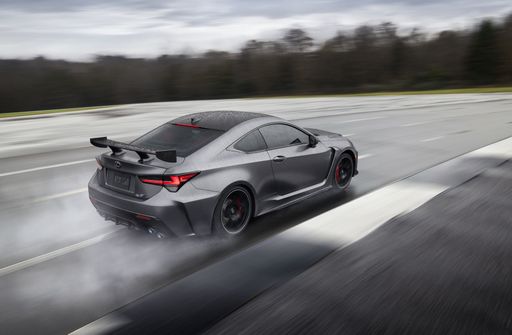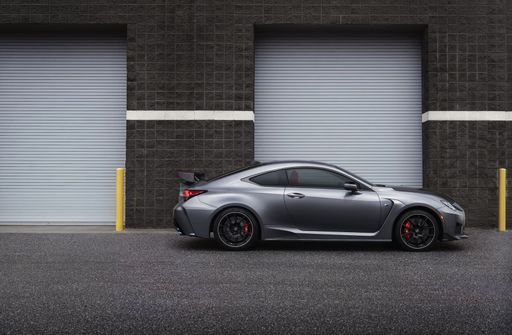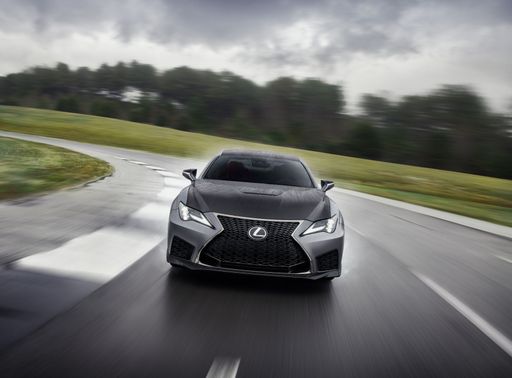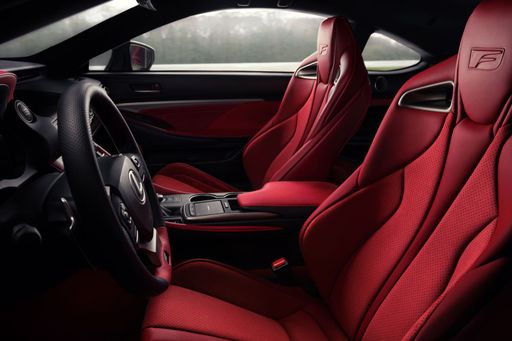Lexus RC VS Nissan Interstar – Specs, Efficiency & Price Comparison
Which model is the better choice – the Lexus RC or the Nissan Interstar? We compare performance (464 HP vs 170 HP), boot capacity (366 L vs ), efficiency (11.80 L vs 7.40 L), and of course, the price (82300 £ vs 34900 £).
Find out now which car fits your needs better!
The Lexus RC (Coupe) is powered by a Petrol engine and comes with a Automatic transmission. In comparison, the Nissan Interstar (Cargo Van) features a Diesel or Electric engine and a Manuel or Automatic gearbox.
When it comes to boot capacity, the Lexus RC offers 366 L, while the Nissan Interstar provides – depending on what matters most to you. If you’re looking for more power, you’ll need to decide whether the 464 HP of the Lexus RC or the 170 HP of the Nissan Interstar suits your needs better.
There are also differences in efficiency: 11.80 L vs 7.40 L. In terms of price, the Lexus RC starts at 82300 £, while the Nissan Interstar is available from 34900 £.
Compare all the key specs now and find out which model fits your lifestyle best!
Lexus RC
The Lexus RC is a striking blend of luxury and performance, embodying a sleek, aerodynamic design that captures attention on any road. Its interior boasts high-quality materials and meticulous craftsmanship, providing a comfortable and refined driving experience. Coupled with responsive handling and a dynamic driving feel, this vehicle appeals to those who seek both style and substance in their automotive choice.
details @ toyota-media.de
@ toyota-media.de
 @ toyota-media.de
@ toyota-media.de
 @ toyota-media.de
@ toyota-media.de
 @ toyota-media.de
@ toyota-media.de
 @ toyota-media.de
@ toyota-media.de
Nissan Interstar
The Nissan Interstar is a versatile van that expertly combines practicality with modern design. It offers a spacious interior that caters to both cargo and passenger needs, making it ideal for businesses and families alike. With its robust performance and efficient fuel consumption, the Interstar stands out as a reliable choice in the commercial vehicle market.
details

|
|
|
|
|
Costs and Consumption |
|
|---|---|
|
Price
82300 - 101500 £
|
Price
34900 - 55600 £
|
|
Consumption L/100km
11.80 L
|
Consumption L/100km
7.4 - 7.5 L
|
|
Consumption kWh/100km
-
|
Consumption kWh/100km
-
|
|
Electric Range
-
|
Electric Range
175 - 410 km
|
|
Battery Capacity
-
|
Battery Capacity
-
|
|
co2
268 g/km
|
co2
0 - 195 g/km
|
|
Fuel tank capacity
66 L
|
Fuel tank capacity
80 L
|
Dimensions and Body |
|
|---|---|
|
Body Type
Coupe
|
Body Type
Cargo Van
|
|
Seats
4
|
Seats
3 - 7
|
|
Doors
3
|
Doors
4
|
|
Curb weight
1715 kg
|
Curb weight
2053 - 2535 kg
|
|
Trunk capacity
366 L
|
Trunk capacity
-
|
|
Length
4710 mm
|
Length
5680 - 6315 mm
|
|
Width
1845 mm
|
Width
2080 mm
|
|
Height
1390 mm
|
Height
2498 - 2756 mm
|
|
Payload
535 kg
|
Payload
965 - 1447 kg
|
Engine and Performance |
|
|---|---|
|
Engine Type
Petrol
|
Engine Type
Diesel, Electric
|
|
Transmission
Automatic
|
Transmission
Manuel, Automatic
|
|
Transmission Detail
Automatikgetriebe
|
Transmission Detail
Schaltgetriebe, Automatikgetriebe
|
|
Drive Type
Rear-Wheel Drive
|
Drive Type
Front-Wheel Drive
|
|
Power HP
464 HP
|
Power HP
105 - 170 HP
|
|
Acceleration 0-100km/h
4.3 - 4.5 s
|
Acceleration 0-100km/h
-
|
|
Max Speed
270 km/h
|
Max Speed
115 - 177 km/h
|
|
Torque
520 Nm
|
Torque
300 - 380 Nm
|
|
Number of Cylinders
8
|
Number of Cylinders
4
|
|
Power kW
341 kW
|
Power kW
77 - 125 kW
|
|
Engine capacity
4969 cm3
|
Engine capacity
1997 cm3
|
General |
|
|---|---|
|
Model Year
2021 - 2024
|
Model Year
2024 - 2025
|
|
CO2 Efficiency Class
G
|
CO2 Efficiency Class
G, A
|
|
Brand
Lexus
|
Brand
Nissan
|
Lexus RC
Introducing the Lexus RC: A Fusion of Elegance and Performance
The Lexus RC stands as a testament to the brand’s relentless pursuit of perfection. This coupe, with its striking design and breathtaking performance, amalgamates cutting-edge technology with luxury, setting a high bar for not just itself but for the entire segment. Let's dive into the technical marvels and innovative features that the Lexus RC has to offer.
Power Under the Hood: Unleashing the V8 Beast
At the heart of the Lexus RC is a formidable 5.0-litre V8 engine, effortlessly producing 464 PS (341 kW) and a torque of 520 Nm. This beast of an engine ensures that the RC is not just a pretty face but a veritable powerhouse, capable of accelerating from 0 to 100 km/h in a mere 4.3 to 4.5 seconds. With a top speed of 270 km/h, this coupe guarantees an exhilarating driving experience.
Transmission and Drivetrain: Precision in Motion
The RC is equipped with a seamless automatic transmission that smoothly harnesses the engine’s raw power, delivering it to the rear wheels thanks to its refined rear-wheel-drive system. This configuration not only enhances driving dynamics but also provides a more engaging and thrilling ride, making each journey unforgettable.
Design and Dimensions: Sleek, Sporty and Spacious
Measuring 4710 mm in length, 1845 mm in width, and 1390 mm in height, the Lexus RC strikes a perfect balance between a compact coupe and spacious luxury car. Its sleek design is complemented by functional dimensions, housing a boot capacity of 366 litres. The elegant exterior is matched by a luxurious interior, crafted to enhance the driver’s connection to the road.
Efficiency and Environmental Considerations
While performance is a priority, the Lexus RC also considers efficiency, featuring an 11.8 L/100km fuel consumption rate. However, it's noteworthy that the RC falls into the CO2 efficiency class G, with emissions rated at 268 g/km. This performance powerhouse thus reflects a blend of thrilling dynamics and conscious engineering.
Comfort and Technological Innovations: Beyond the Drive
Inside, the RC doesn't shy away from technology. High-end materials and cutting-edge tech simplify and enhance the driving experience. Its intuitive infotainment system and superior sound quality affirm Lexus’s commitment to luxury and innovation, turning the cabin into an oasis of comfort amidst the roaring engine's excitement.
Conclusion: A Spectacle of Luxury and Performance
The Lexus RC is not just an automobile; it's a statement. With its combination of bold aesthetics, remarkable power, and luxurious craftsmanship, it stands as an impressive vehicle that appeals to those who have a zest for life and a love for driving. True luxury is not just about opulence but also about merging power with precision, a feat the Lexus RC accomplishes with aplomb.
Nissan Interstar
The Evolution of the Nissan Interstar
The Nissan Interstar has long been a staple in the commercial vehicle sector, known for its robust build and practical design. The latest iterations have further cemented its status with a range of technical enhancements and innovative features aimed at aiding businesses in achieving optimal efficiency. Whether you're navigating city streets or traversing the highways, the Interstar stands out as a reliable workhorse ready to meet various transport needs.
Power and Performance
The current range of Nissan Interstar models boasts diesel engines ranging from 105 to 180 PS, offering a commendable blend of power and fuel efficiency across the board. With a fuel consumption of between 7.4 and 7.5 litres per 100 kilometres, these vehicles are designed to minimise operational costs while maximizing performance.
All models feature four-cylinder engines, with engine displacement between 1997 and 2299 cm³, capable of producing torque figures between 330 and 400 Nm. These specifications ensure that the Interstar offers superior pulling power, which is particularly useful for transporting heavy loads across different terrains.
Transmission and Drive Options
Versatility is at the heart of the Nissan Interstar, with transmission options including both manual and automatic gearboxes. Drivers can also choose between front-wheel and rear-wheel drive configurations, allowing the vehicle to suit specific logistical requirements or personal preferences.
For those seeking simplicity and ease of use in urban environments, the Interstar with its automated gearshift provides a smooth driving experience, reducing driver fatigue and increasing focus on the road ahead.
Dimensions and Load Capacities
The Nissan Interstar is available in various lengths, from 5048 mm to an extensive 6848 mm, catering to diverse commercial needs. With widths ranging from 2070 mm to 2222 mm and heights from 2307 mm to 2808 mm, the Interstar offers multiple configurations to maximise cargo space and accommodate various loads.
With a maximum payload capacity of up to 1451 kg, businesses can rest assured that the Interstar is more than capable of delivering goods efficiently without compromising on safety or comfort.
Innovation and Technological Features
While functionality remains a priority, Nissan has not skimped on technological advancements. Among the innovations included are advanced safety features, such as anti-lock braking systems (ABS), electronic stability control (ESC), and a variety of sensors to assist with parking and reversing.
In terms of driver comfort, the brand offers multiple trim levels with exceptional interior features designed to enhance driver experience during long hauls. Options such as climate control, advanced navigation systems, and modern infotainment setups are available, ensuring that both driver and passenger remain comfortable and connected, regardless of the journey length.
Coachwork and Trim Options
The Interstar line-up provides a range of trim levels and equipment lines, from the entry-level Visia to the high-spec Tekna, catering to different market demands and individual preferences. The selection allows buyers to prioritise features that best suit their operation or driving style.
For example, the N-CONNECTA variant offers an array of added extras, enhancing both connectivity and comfort for drivers who rely on the vehicle as a mobile office.
Conclusion
The Nissan Interstar represents a harmonious blend of power, efficiency, and technological innovation in the large van segment. With its vast array of options and features, the Interstar is undeniably a top choice for businesses looking to invest in a dependable and adaptable commercial vehicle. As the line-up continues to evolve, the Interstar remains poised to meet the growing challenges and demands of the modern logistic landscape.
The prices and data displayed are estimates based on German list prices and may vary by country. This information is not legally binding.
